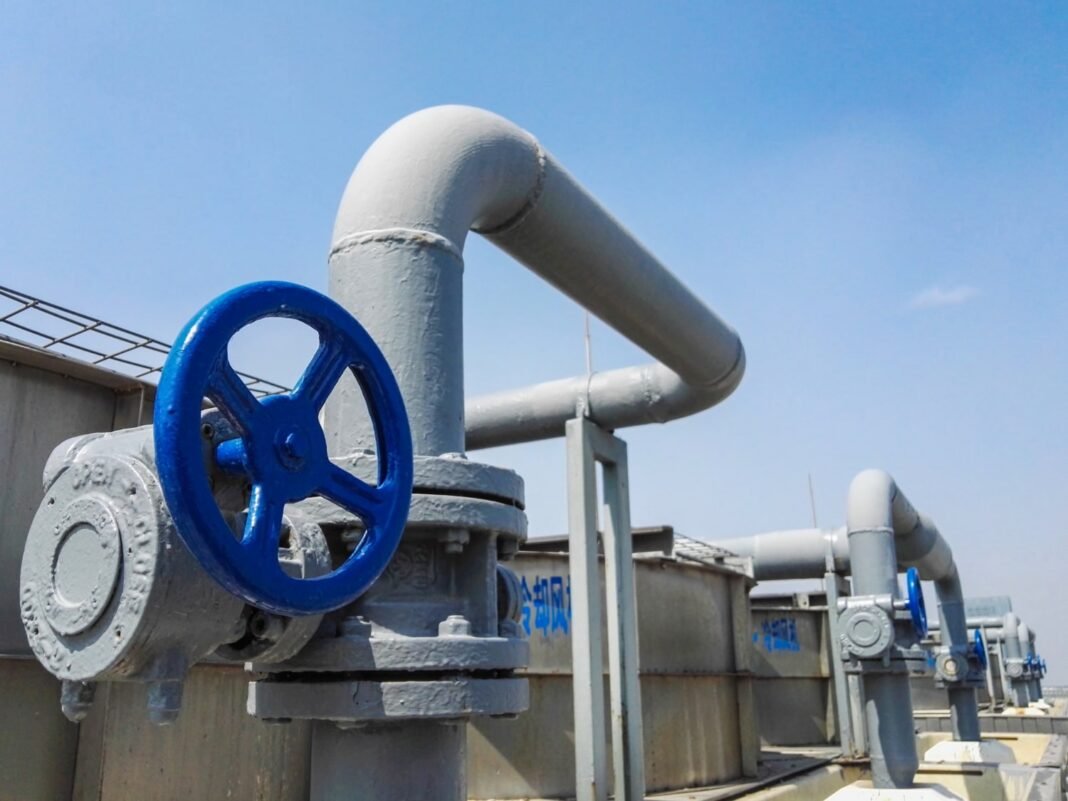The Water and Wastewater Valve Market is rapidly transforming as industries globally modernize and adopt automation. At the core of these changes are sophisticated flow control solutions that oversee fluid dynamics in industrial processes.
With a growing number of industries integrating AI and IoT technologies under the umbrella of Industry 4.0, there is an increasing demand for smarter and more efficient valve systems.
As a result, this market is not only experiencing steady growth but is also paving the way for a future rich in innovation and technological integration.
In recent years, the global Water and Wastewater Valve Market has seen impressive growth.
Valued at $8.3 billion in 2020, it is expected to reach an astonishing $14.7 billion by 2032, with a consistent CAGR of 4.5% from 2023 to 2032.
Several factors are propelling this trend, including the rapidly increasing global population, urban growth, and heightened investments in critical sectors such as oil and gas.
However, challenges like rising tariffs on raw materials may somewhat hinder growth. Still, advancements in technology and expanding application areas present significant opportunities for ongoing progress.
Primary Factors Driving Market Growth
Population increase and urban development are creating an urgent requirement for enhanced water management systems.
As more individuals flock to urban areas, the necessity for clean water and efficient wastewater management has surged.
Valves are vital in ensuring these systems function effectively and reliably, managing both pressure and flow importance, industries and municipalities are making substantial investments in upgrading their water infrastructure, propelling the market forward.
Additionally, the oil and gas industry significantly supports market growth. Water and wastewater valves are essential across the downstream, midstream, and upstream stages of oil and gas production.
Notably, North America, particularly the U.S. and Canada, is a major center for investment. ICF International Inc.’s North America Midstream Infrastructure through 2035 report anticipates investments between $685 billion and $895 billion in oil and gas infrastructure.
A significant portion of this funding will focus on natural gas extraction, processing, and transportation

activities that rely heavily on highly efficient valve systems.
Moreover, the incorporation of automation and smart technologies in valve operations signifies a transformative development.
Automated valves improve production efficiency by providing precise control and remote operation capabilities.
This modernization minimizes human error and guarantees optimal system performance, enhancing the overall attractiveness of contemporary valve solutions across various industries.
Regional and Segmental Perspectives
Geographically, Asia-Pacific is at the forefront of revenue generation, thanks to its strong industrial foundation and ongoing infrastructure development.
Nations like China, India, and Japan are making substantial investments in water and wastewater management to accommodate their growing urban populations and industrial activities.
Essentially, the Asia-Pacific region remains a promising market for manufacturers looking to capitalize on the increasing demand.
From a segmentation perspective, the ball valve category has emerged as the leading source of revenue.
Renowned for their robustness, effective sealing properties, and user-friendly operation, ball valves are highly preferred in applications related to water distribution and wastewater management.
Additionally, when it comes to materials, steel continues to be the preferred option due to its exceptional strength, resistance to corrosion, and versatility in various operational settings.
The analysis of end-users similarly highlights the oil and gas industry as a dominant player. Given the sector’s significant dependence on fluid control systems, it understandably holds a substantial portion of the market.
Nevertheless, other sectors, including chemical production and energy generation, are not far behind, each playing a crucial role in the increasing demand for cutting-edge valve technologies.
Competitive Landscape and Future Prospects
The Water and Wastewater Valve Market is highly competitive, characterized by several major players influencing its dynamics.
Prominent companies such as AVK Holding, Flowserve Corp., Emerson Electric Co., and Davis Valve are making investments significant in research and development to deliver innovative, sturdy, and efficient valve solutions.
Other companies, like Fluidchem Valves (India) Pvt. Ltd. and EG Valves Manufacturing Co., Ltd., are broadening their global presence by targeting emerging markets.
Technological innovations are set to transform the future of this sector. The incorporation of sensors, data analysis, and AI-driven monitoring technologies will facilitate predictive maintenance, reduce downtime, and enhance system performance.
These advancements are anticipated to create new revenue opportunities and solidify the market’s growth trajectory in the coming decade.
However, despite the positive outlook, businesses must carefully navigate various challenges.
Variations in raw material prices, stringent environmental regulations, and the necessity for ongoing technological advancements require a proactive strategy.
Thus, continuous innovation, strategic alliances, and investments in sustainable practices will be essential for maintaining growth.
Expert Editorial Comment
The trajectory of the Water and Wastewater Valve Market over the next ten years is expected to be both exciting and transformative.
With a growing global population, increasing industrial activity, and a heightened reliance on advanced technologies, the demand for efficient fluid management solutions has never been more critical.
While challenges such as material costs and regulatory pressures persist, the vast opportunities significantly outweigh the risks.
As industries continue to progress and modernize, valves will remain vital elements of essential infrastructure systems.
Companies that emphasize innovation, adopt automation, and respond to evolving market needs are well-positioned for success.
In summary, the future appears promising for this crucial industry, and its role in fostering sustainable, efficient, and intelligent systems is set to strengthen in the years to come.

